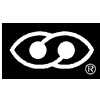Multiple Camera Motion Analysis


Sequences of images from multiple cameras can be captured simultaneously by up to eight PIXCI® Imaging Boards, allowing analysis of motion from multiple perspectives. A trigger by mouse, TTL input, time of day, SMPTE VITC code, or RS-232 can be used in one of three modes, (a) All of the sequence captured following the trigger, (b) All of the sequence captured preceeding the trigger, or (c) The captured sequence "surrounds" the trigger, with user-selected number of frames before and after the trigger.
With, for example, 768 MByte of frame buffer memory (such as on a PC with 1 GByte running Windows XP), two PIXCI® SV5 imaging boards can each record over 1100 frames of RS-170 video, at 752x480 and 30 fps - over 37 seconds of simultaneous video!
Similarly, with 768 MByte of frame buffer memory, two PIXCI® D imaging boards connected to Dalsa CA-D1-0128A digital output cameras can each record over 49,000 frames of 128x128 resolution at 830 fps - over 59 seconds of simultaneous video!
Other cameras and video resolutions can be supported, limited only by the 132 MByte/sec bandwidth of the 32 bit PCI bus, or the 528 MByte/sec bandwidth of the 64 bit PCI bus.
Images are captured with true pixel accuracy, neither compressed nor approximated, allowing detailed analysis of edge position or velocity.
The two "ball and racquet" sequences were taken by COHU 4110 cameras, with an electronic shutter speed of 1/2000 second, showing the impact of ball and racquet from two different viewpoints.
The images were processed and printed by EPIX® XCAP Interactive Software on a standard Hewlett-Packard LaserJet 4 at 600 dpi.
